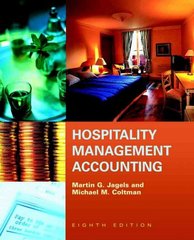Question
TESLA'S INVESTMENT IN CHINA In July of 2018, Tesla announced that it would be building a new auto plant in Shanghai, China, its first factory
TESLA'S INVESTMENT IN CHINA In July of 2018, Tesla announced that it would be building a new auto plant in Shanghai, China, its first factory outside of the United States. When operating at full production, the Chinese plant will be capable of producing 500,000 of Tesla's electric cars a year, doubling the company's output. Tesla has been selling its vehicles in China for several years, exporting finished cars from its Fremont, California, plant. The investment had been approved by Chinese authorities in record time, who indicated they would allow Tesla to establish a wholly owned subsidiary in China. The Chinese also helped with $1.6 billion in funding from state-owned banks. The decision to invest directly in the country was precipitated by a number of factors. By 2018, China was already the world's largest auto market and the largest market for electric vehicles (EV) with sales of 1.2 million in 2018 (including trucks and buses). Forecasts suggested that China could reach EV sales of 1.8 million by 2021 and 6 million by 2025. Driving the growth projections is a bold commitment by the Chinese government that 100 percent of vehicles sold in China by 2030 will be EVs. The Chinese government is pursuing this goal in order to limit CO emissions and reach its climate change objectives under the Paris Agreement on climate change, to reduce urban pollution, and to reduce its dependence on imports of foreign oil (China produces very little oil). The goal has been supported by favorable regulations and producer subsidies from the Chinese government, along with tax credits for buyers of EVs. The government sees electric vehicle production as a way to transform China into a major player in the global auto industry. For Tesla, participating directly in this booming market with local production had long been considered an option. Tesla had been held back by China's tough rules for foreign businesses, which would have required it to cede a 50 percent share in ownership of the factory to a local partner. For a company whose competitive advantage is based upon technology, this was a risky proposition. In 2018, however, China announced it was relaxing the 50/50 joint venture requirement for foreign investment in a number of areas, including the automobile industry. Under the Trump administration the United States had launched a trade war with China. The United States had placed 25 percent import tariffs on a wide range of Chinese goods, and China had responded by placing tariffs of its own on some American imports. This created a risk for any company exporting products from the United States to China. China had only recently eliminated a 25 percent tariff on imports of foreign cars, and now there was a risk this might be reimposed. In addition to trade policy reversals, Tesla faced risks from currency fluctuations. Investing directly in China sidestepped these risks. 2 Tesla's Shanghai factory started up production in December 2020, producing Tesla's Model 3 car, which was priced at around $50,000. China exempted the Model 3s from a 10 percent sales tax and was providing a $3,560 subsidy on each car. In the company's first year of local production, sales surged to 120,000 units, up from 40,000 in 2019. This made China Tesla's largest market after the United States. Forecasts suggest that China will make up 40 percent of Tesla's sales by early 2022, up from 20 percent in 2020. However, Tesla does not have the premium electric car market to itself in China. A trio of local producersNio, Xpeng, and Liare also in the premium EV segment, and although Tesla leads, they are catching up.
1. What did you learn from the case to advise a manager unfamiliar with the case? 2. How would this case situation demonstrate a risk or benefit to an international business manager?
Step by Step Solution
There are 3 Steps involved in it
Step: 1

Get Instant Access to Expert-Tailored Solutions
See step-by-step solutions with expert insights and AI powered tools for academic success
Step: 2

Step: 3

Ace Your Homework with AI
Get the answers you need in no time with our AI-driven, step-by-step assistance
Get Started


